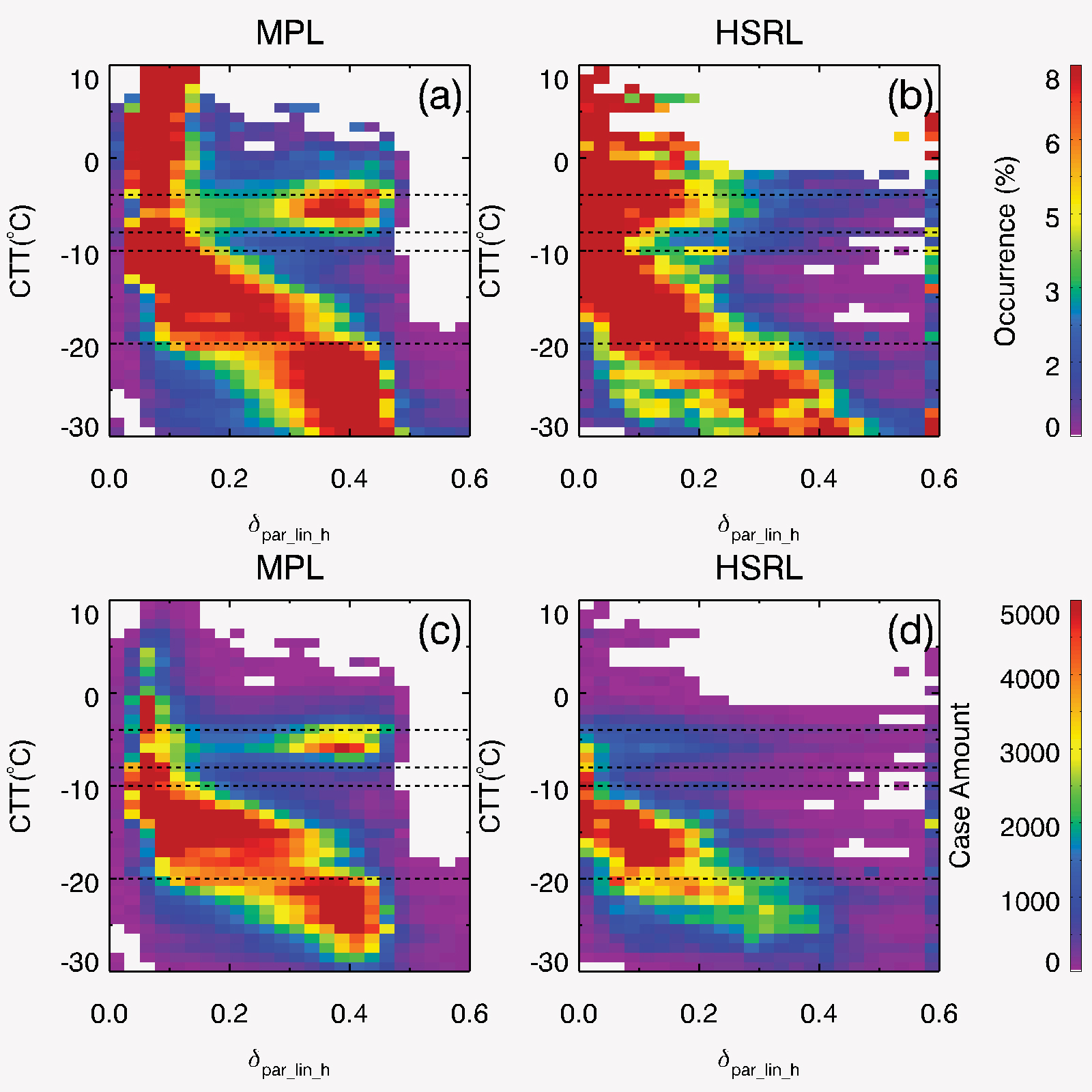Ice formation in stratiform mixed-phase clouds at warm temperatures
Submitter:
Zhang, Damao — Pacific Northwest National Laboratory
Area of research:
Cloud Processes
Journal Reference:
Science
Low-level stratiform clouds have a high occurrence in polar regions. Accurate cloud thermodynamic phase determination is required to perform cloud property retrievals and to study aerosol-cloud interactions with remote-sensing measurements. However, ice particle formation in slightly supercooled stratiform clouds is still not well documented or understood.
Impact
The Atmospheric Radiation Measurement (ARM) Research Facility provides state-of-the-art measurements of cloud macrophysical, microphysical, and radiative properties using various ground-based remote sensing, in situ, and sounding measurements. In this study, four years of combined lidar depolarization and radar reflectivity measurements are analyzed to study ice particle formation in slightly supercooled Arctic stratiform clouds over the ARM North Slope of Alaska (NSA) Barrow site.
Summary
Combined lidar depolarization and radar reflectivity measurements offer reliable distinctions between cold drizzle drops and non-spherical ice crystals in slightly supercooled Arctic stratiform clouds (ASCs). The large data set used here provides robust evidence that, statistically, ice crystals are formed in slightly supercooled ASCs at cloud-top temperatures as high as -4 °C. However, more detailed analysis of the ice crystal formation mechanisms at high cloud-top temperatures is needed. In addition, due to small depolarization at the cloud-top temperature range between -8 and - 10°C, it is still challenging to determine cloud thermodynamic phase structures within this range. For strong ice precipitating ASCs (radar reflectivity > -20 dBZ), lidar depolarization correlates well with radar reflectivity at each temperature range, but the depolarization-reflectivity relationships vary with cloud-top temperature ranges, which might be related to different ice particle growth habits. The liquid water path (LWP) has different impacts on ice phase evolution in ASCs at different temperature ranges. Further interpretation of the impacts of LWP and other factors requires a combination of observations with modeling work.


